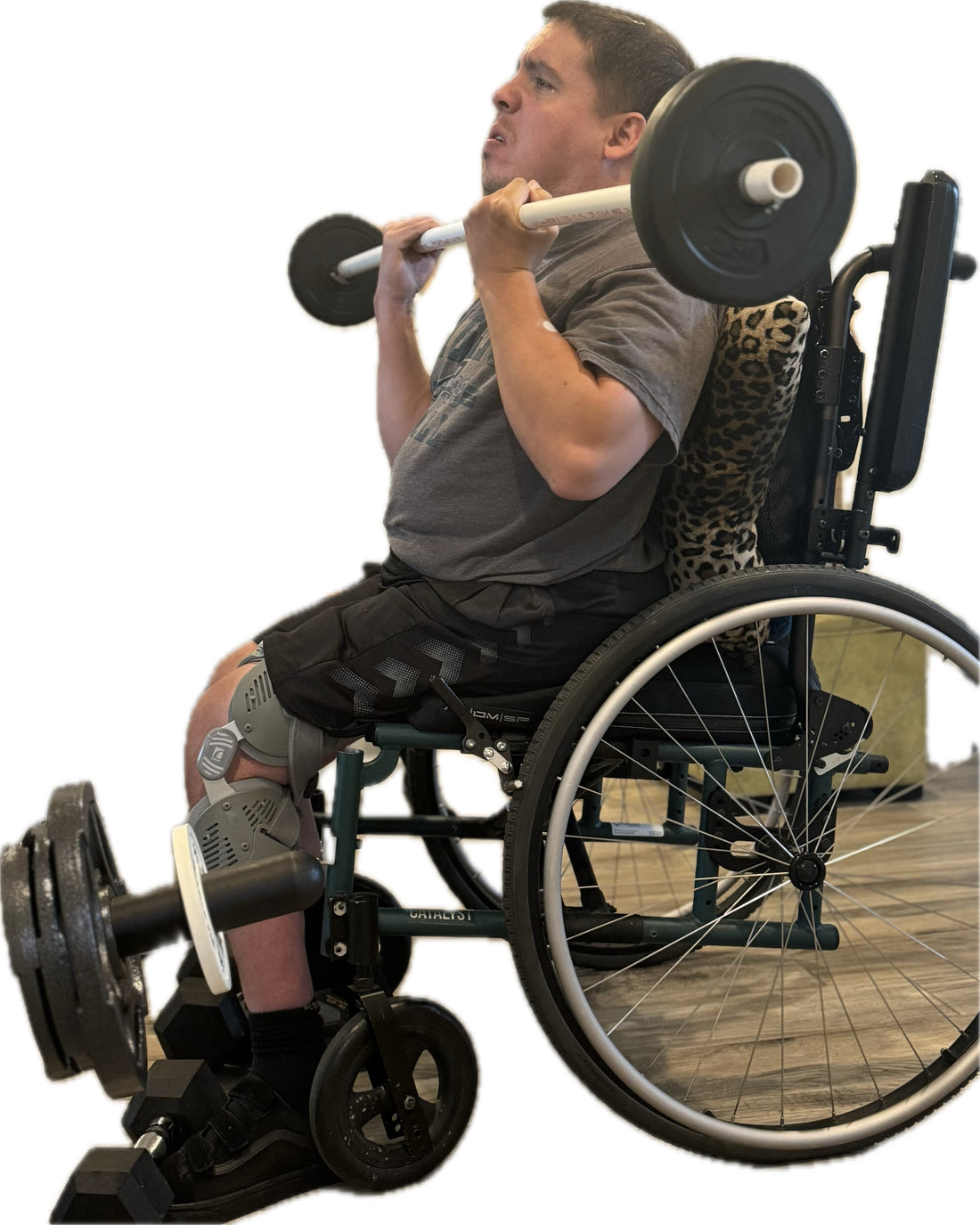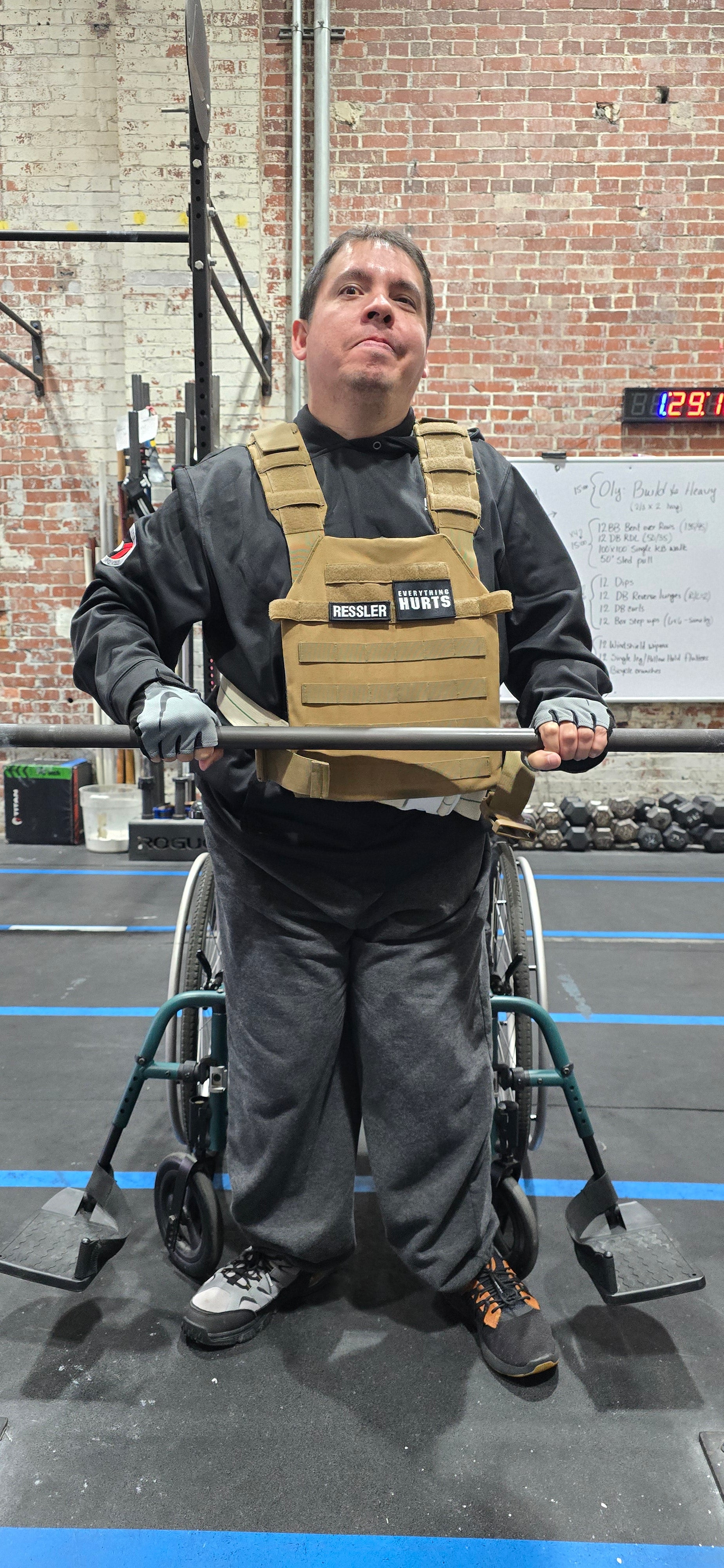The clean and press is a classic exercise that combines strength and power, targeting multiple muscle groups. Understanding the differences between regular cleans and presses (standing) versus seated/adapted cleans and presses is essential for effective training.
### Regular Cleans and Presses (Standing)
#### Proper Form:
1. **Starting Position**:
- Stand with your feet shoulder-width apart.
- Hold the barbell with an overhand grip, hands slightly outside shoulder width.
- The barbell should rest against your shins.
2. **The Clean**:
- **Lift-Off**: Initiate the movement by pushing through your heels and extending your hips and knees simultaneously.
- **Pull**: As the barbell reaches your knees, aggressively pull the bar towards your chest, keeping it close to your body.
- **Catch**: As the bar reaches your collarbone, rotate your elbows underneath the bar and drop into a quarter squat to catch it on your shoulders.
3. **The Press**:
- Stand tall with the barbell resting on your shoulders.
- Engage your core and press the bar overhead by extending your arms while keeping your elbows slightly in front of the bar.
- Lock out your arms at the top and ensure your body is in a straight line.
4. **Lowering the Weight**:
- Reverse the motion by lowering the bar back to your shoulders, then back down to the starting position.
#### Muscles Involved:
- **Primary Muscles**: Deltoids, trapezius, quadriceps, hamstrings, glutes, back muscles (trapezius, rhomboids).
- **Secondary Muscles**: Biceps, triceps, core muscles (rectus abdominis, obliques).
### Seated/Adapted Cleans and Presses
#### Proper Form:
1. **Starting Position**:
- Sit on a bench or chair with back support, feet flat on the ground.
- Hold the barbell at shoulder height with an overhand grip, slightly wider than shoulder-width.
2. **The Clean**:
- **Initial Pull**: Engage your core and pull the barbell towards your chest. Since you are seated, you will not perform the explosive hip drive.
- **Catch**: Rotate your elbows underneath the bar to catch it at shoulder level, maintaining a strong upright posture.
3. **The Press**:
- Press the barbell overhead by extending your arms, ensuring to keep your back straight and core engaged.
- Lock out your arms at the top, similar to the standing press.
4. **Lowering the Weight**:
- Carefully lower the bar back to your shoulders, then back down to the starting position.
#### Muscles Involved:
- **Primary Muscles**: Deltoids, upper pectorals, triceps, and core stability muscles (to maintain posture).
- **Secondary Muscles**: Upper back muscles (trapezius, rhomboids), biceps, and the lower body muscles are less engaged due to the seated position.
### Key Differences:
- **Stance**: Standing cleans and presses engage the lower body extensively, while seated cleans and presses focus more on the upper body and core stabilization.
- **Muscle Activation**: The standing variation recruits more muscle groups due to the involvement of the legs and hips, whereas the seated version isolates the upper body more.
- **Biomechanics**: The seated position reduces the need for explosive hip drive, making it more accessible for individuals with mobility limitations or focusing on upper body strength.
### Conclusion
Both standing and seated/adapted cleans and presses are effective exercises, but they serve different purposes in a training regimen. Practicing proper form is crucial to maximizing benefits and minimizing the risk of injury. Always consider individual fitness levels and goals when incorporating these exercises into your routine.


